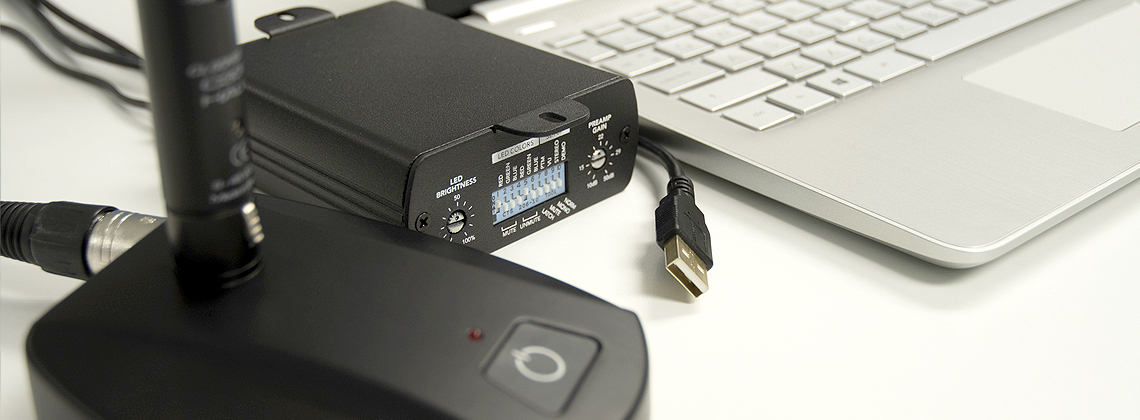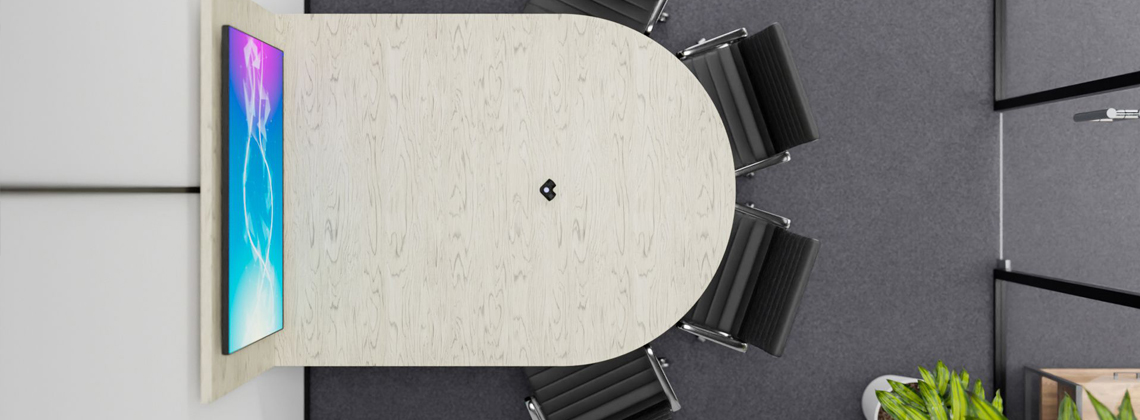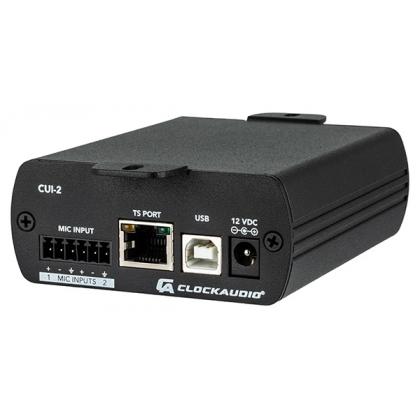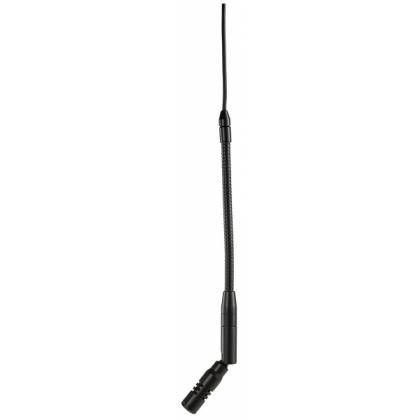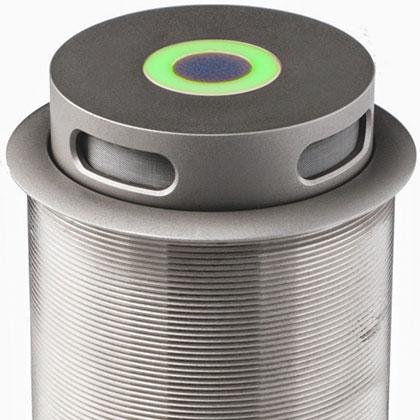How to connect a microphone to PC
CIE explains how to connect a professional AV / conference microphone to your PC via USB for Zoom & Teams meetings, live streaming and webinars.
Extended lockdowns and the increasing trend and necessity for working from home has resulted in some major changes to many people's working activities at the desk and how we communicate and interact with colleagues remotely.
With Zoom and Teams meetings becoming the new normal and training events relying almost exclusively on webinars - our new virtual offices are expected to be here to stay. And so ensuring we project the most professional impression to our colleagues, customers and audiences via a myriad of virtual platforms is becoming both a new skill and a new technology focus.
Many users are investing in increased broadband speeds and higher quality cameras - but an increasing number of switched-on virtual professionals are pinpointing high quality voice reproduction as a key element of professional online meetings, presentations and training events.
Most remote offices, of course, are focused around a personal PC / laptop with its own built-in camera and microphone - but standard on-board components have never previously been considered as key specification differentiators - and so often deliver low quality, limited performance.
A professional microphone is designed to provide the best quality voice reproduction in a wider range of situations and applications - such as multiple users, noise reduction, directionality, mounting locations, etc. However, with the main connectivity input to your PC/ laptop being USB, the choice of USB-connected microphones becomes extremely limited, with many USB microphones being lower-quality, consumer devices.
Therefore, in order to have the ability to choose from a full range of professional microphones connected to your PC, a microphone-to-USB interface is an ideal product.
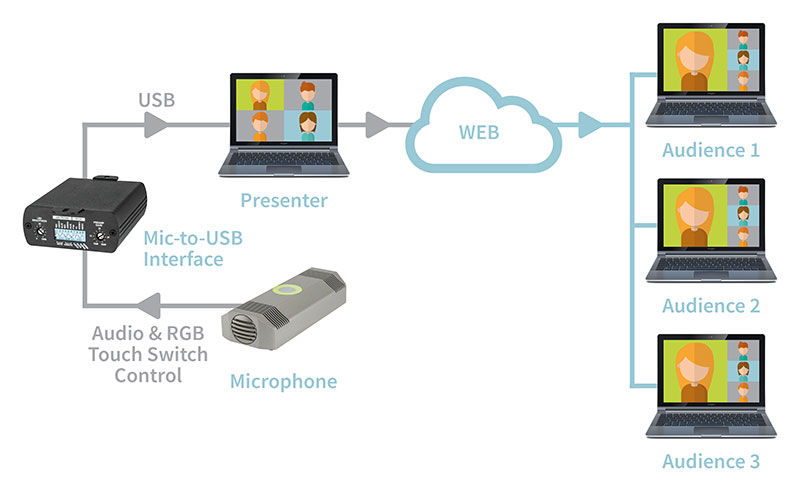
Why do I need a Microphone to USB Interface?
The majority of professional microphones are supplied with either a 3 pin / 5 pin XLR connector or with unterminated, open-ended wires for connection via screw terminals or Phoenix connectors - none of which are compatible with your average PC / laptop, of course! Therefore, converting the signal to USB provides the most convenient connection to your computer.
In addition, PC microphone inputs don't carry phantom power, which is required to drive professional condenser-type microphones.
What type of microphone should I use for virtual meetings and webinars?
Your choice of microphone depends on a number of factors including application and environment:
- Number of people / users; is it for your personal desk, 3 or 4 people in a huddle space or higher numbers in a conference room, for instance?
- Ambient noise levels; are you working in a noisy environment (the 'ambient' noise around could be loud equipment, outside noise, other workers around you or even the kids when you're working from home!)
- Distance from the microphone; if you're at your individual WFH desk, you'll probably be quite close to the microphone; whereas in a conference room or huddle space environment, users may be further away and spaced our around the table.
- Fixed or moveable position of the microphone; will the microphone have a permanent location on the desk or table, or will it be removed / put away when not in use?
- Additional functions; does your microphone need additional functionality such as on/off/mute switch or status indicators?
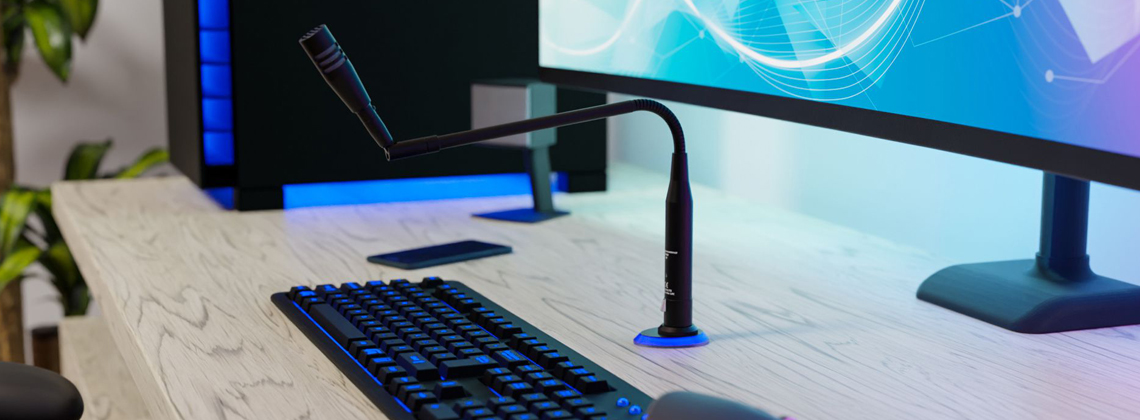
Gooseneck Microphone
Gooseneck microphones are so named because of their long, usually flexible shafts. Used for AV and conferencing, gooseneck microphones are characteristically directional for individual users; their flexible goosenecks allowing for easy adjustment of the microphone head to the exact position of the speaker.
READ MORE
Knucklejoint Microphone
Knucklejoint microphones have very similar characteristics and application gooseneck microphones. However, they will usually have a shorter shaft and their knucklejoint mechanism is more robust than a gooseneck, for situations where the position of the microphone head is frequently adjusted.
Shotgun Microphone
Shotgun microphones are a highly directional version of either a gooseneck, knucklejoint or suspended format.
The characteristic 'shotgun' microphone head is designed to pinpoint and capture sound / voice from further away. So, in situations where the speaker / presenter cannot be close to the microphone, a 'shotgun' version might be the preferred option.
Boundary Layer Microphone
Boundary layer microphones are small, discreet microphones placed on the surface of a desktop or table top - the 'boundary' being the desktop which will reflect sound towards the microphone to actually increase the sound picked-up and provide a more natural sound reproduction.
Boundary Microphones are usually very low profile and have an omnidirectional capsule to pick-up sound from multiple users around a table. Alternatively, boundary microphones may have multiple capsules (or 'elements') directed at each individual or in 2, 3 or 4 directions for more accurate voice pick-up in a meeting / huddle space situation.
Though conventionally boundary microphones are placed on the desktop, many 'through-desk' versions are available for permanent installation and discreet under-table cabling, as well as 'pop-up' through-desk versions which will retract to be flush with the surface when not in use.
READ MORE
Suspended Microphone
Suspended microphones are available in gooseneck, knucklejoint or shotgun versions, but are hung from the ceiling rather than desk mounted. Where desk mounting would be obtrusive or in the way, or in situations where there is no 'furniture' to desk mount the mic, suspending it from the ceiling offers a simple alternative.
Wireless Microphone
Wireless Microphones (also frequently referred to as 'radio microphones') provide an alternative solution where cabling may be difficult or the speaker / presenter is needs to move around the room.
Using wireless technologies such as UHF VHF, or bluetooth, most types of microphone format (see above) can now be supplied as a wireless product. As well as solving the problem of cabling issues, wireless microphones are also very useful for temporary requirements - such as when a room is only used for huddle / conferencing infrequently.
Read more...
• Choosing the right microphone
• Quick tips for using a microphone
• How to design an audio system
• How to eliminate loudspeaker feedback
Need help choosing the right microphone?
CIE is one of the UK's leading Audio distributors and has over 50 years experience in supply and system design for many of the UK's largest, high profile audio projects; our AV experts provide a unique level of technical support and customer service.
If you would like assistance choosing the right microphone for your system, please call our team today on T. 0115 9770075 or email us now.
